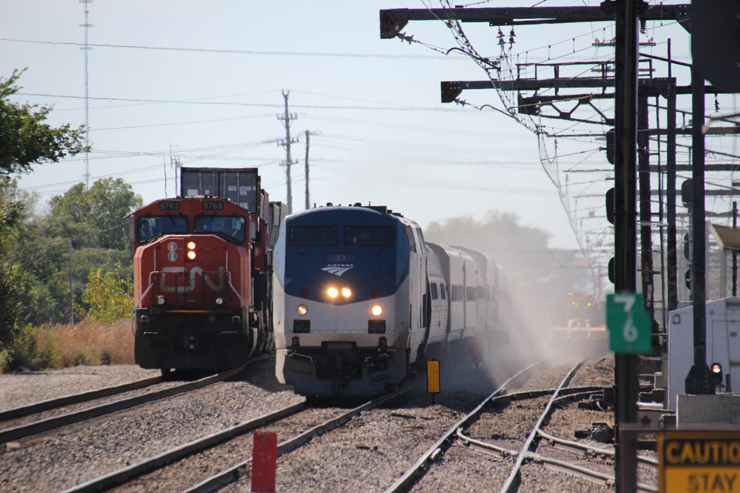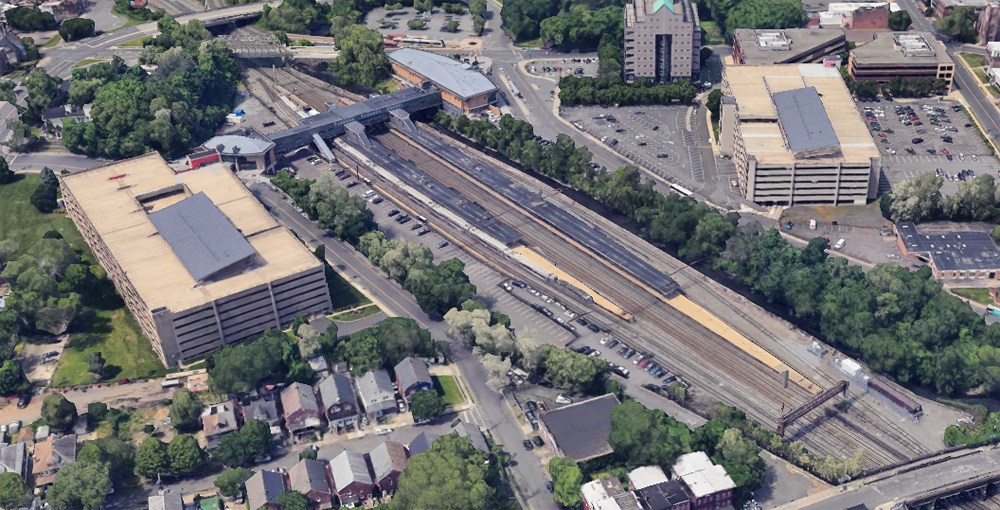
DALLAS – Union Pacific executives today outlined a three-year growth plan that hinges on regaining market share in intermodal, carload, and bulk traffic in order to offset the continued steep decline of coal.
Wall Street analysts have been skeptical of UP’s volume growth forecasts because the railroad has struggled to meet them in recent years. But CEO Jim Vena says UP wants to redefine what’s possible for the railroad, like Roger Bannister breaking the 4-minute mile barrier or Edmund Hilllary and Tenzing Norgay conquering Mount Everest.
“I don’t listen to people when they tell me, ‘well, coal could be a problem.’ So what! What do we do to make sure we make that up? We do have a great railroad and we should be able to use our railroad and our network to grow. So it’s all about what’s possible,” Vena told investors and analysts during the company’s investor day this morning.
Key traffic growth segments include intermodal, petrochemicals, cross-border traffic with Mexico, and grain and grain products such as renewable fuels.
The railroad attracted customers to 182 new rail-served locations on its network between 2021 and for the year to date that generate more than $700 million annually, says Kenny Rocker, executive vice president of marketing and sales. Still to come: More than 200 active customer construction projects that, when complete, have an annual revenue potential of $1.6 billion.
UP has added 895,000 annual lift capacity to its intermodal terminals since 2022 and plans to add capacity to handle 250,000 additional lifts in the coming years.
UP over the next three years will add new passing sidings, extend others, and build sections of double track to allow the railroad to better handle longer trains, particularly in the Pacific Northwest and on the Sunset Route linking Southern California with Texas, says Eric Gehringer, executive vice president of operations.
Next year UP will begin chipping away at the remaining 127 miles of single-track on the Sunset Route with double-tracking projects in Arizona as well as around El Paso, Texas.
One key to improving productivity – and therefore capacity – is operating longer trains, Gehringer says. UP has set records for average train length in each of the past three months.
UP also will continue making investments at its yards, including building longer tracks, adding yard tracks, and building 3- to 5-mile yard bypass tracks to remove mainline bottlenecks at busy terminals. It also will continue to roll out technology systems that help speed car processing.
Other technology advancements will help produce $100 million in savings. UP has tied together its positive train control, computer-assisted dispatching, and NetControl transportation management system to glean the data necessary to make real-time adjustments to its transportation plan.
Elsewhere, UP is streamlining its customer-facing tech systems with an eye toward making them faster and simpler to use, while providing customers with their information in one place. It’s also piloting a customer vision tool that will provide better car location data and notify shippers when there’s a delay, says Rahul Jalali, chief information officer.
Executives outlined the strides that UP has made in operations and service since Vena became CEO in August 2023. Car miles per day are up, average terminal dwell is down, and the separate service indices for intermodal and manifest/auto customers each have improved by 10 points.
One element of Vena’s safety plus service and operational excellence strategy is keeping a buffer of train crews and locomotives at the ready in order to respond to unexpected surges in traffic or to recover from disruptions like hurricanes, wildfires, or derailments.
Proof the strategy is working, Chief Financial Officer Jennifer Hamann says, was how well UP handled a spike in international intermodal volume from West Coast ports. The railroad was expecting a double-digit decline in international intermodal this year due to a contract loss to rival BNSF Railway. Instead, West Coast port volume went up 30% in the second quarter.
UP moved record tonnage from West Coast ports in August and likely will top that record this month, says Kari Kirchhoefer, senior vice president of the railroad’s premium traffic segment.
The railroad’s safety metrics also show improvement, including a 22% reduction in injuries for the year to date.
For the 2025-2027 period – excluding coal and fuel surcharges – UP expects revenue to grow faster than volume and volume to grow at a rate that’s above the overall pace of the various freight market segments. UP is aiming for compounded earnings per share growth in the high single-digit to low double-digit range. And the railroad expects to continue to be able to get pricing gains above the rate of inflation.
UP plans to spend $3.5 billion to $3.7 billion per year on capital expenses and maintain its industry leading operating ratio and return on invested capital. The railroad aims to buy back between $4 billion and $5 billion worth of its shares and raise dividends.
UP does not have a specific operating ratio target because the closely watched metric is an outcome of everything a railroad does, Vena says. Prior to Vena’s arrival, UP had long had a 55% operating ratio goal.
“Yes, O.R. is important to us. Yes, we want to be the leaders. But it truly is a result of what you do,” Vena says. “If you focus too much on driving to a specific number – like if you came out and said UP’s going to be a 55 or a 56 O.R. – you can make bad decisions inside the company trying to drive towards that number.”














Sure would like to know where those locomotives and crews were (are) staged. Have not seen any extra locomotives in Ft Worth.
longer trains won’t help service, shorter more frequent trains will. he said nothing about getting rid of PSR, which is a big growth killer.
Instead, they want to keep reinventing the wheel.
“The railroad aims to buy back between $4 billion and $5 billion worth of its shares and raise dividends.”
This means you have fewer growth prospects than you suggest. Mr. Jim.
What does stock buybacks have to do with growth prospects?
If it mean they get rid of people like Ancora who want to force railroads to do it their way so they can cut and run, then I am all for it. I will wit and see…